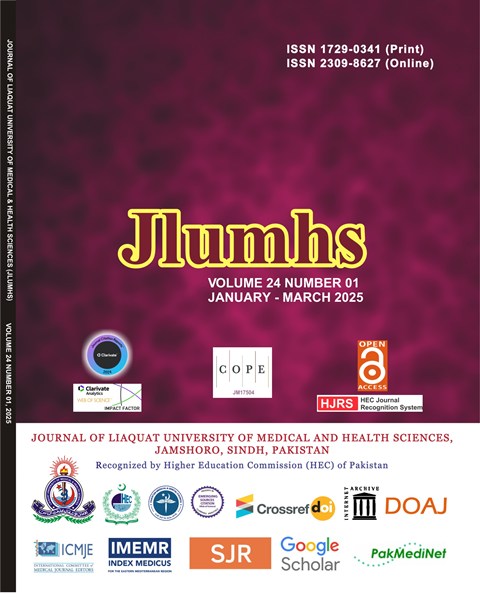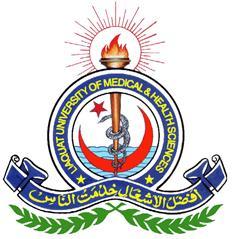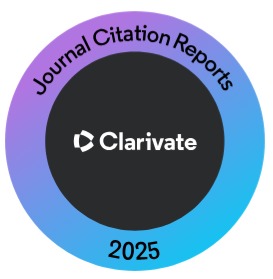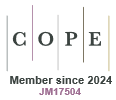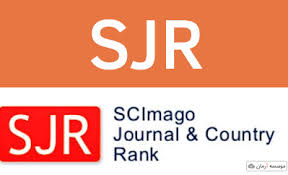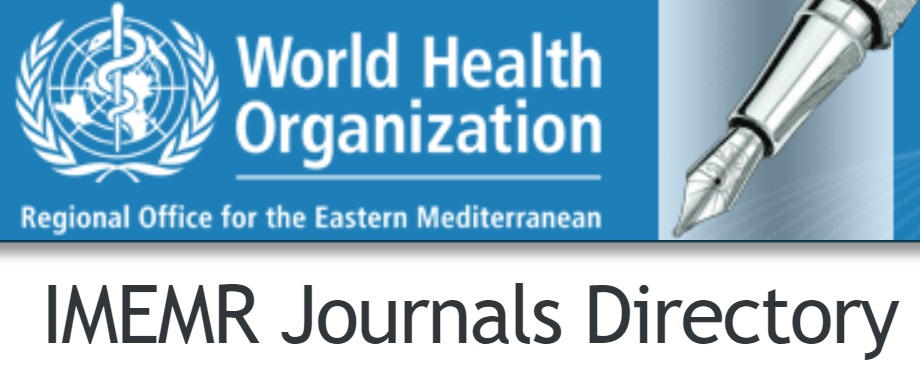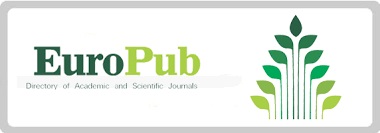Network Pharmacological Study of Papaver Somniferum to Explore the Potential Compounds to Treat Epilepsy
Keywords:
Papaver somniferum, epilepsy, network pharmacology, Molecular docking, Medicinal plants, PPI network.Abstract
Objective: This study aims to discover potential compounds of Papaver somniferum for epilepsy treatment using network pharmacology and molecular docking tools.
Methodology: Papaver somniferum compounds were obtained from KNApSAcK and the IMPPAT database. Potential epilepsy targets were obtained from DisGeNET and GeneCards. After identifying common targets using a Venn diagram, DAVID analysis was performed. STRING database was used for protein-protein interactions, and Cytoscape was used for visualization and construction of target-compound-pathway network. Molecular docking was performed to identify potential active ingredients against epilepsy.
Results: Fifteen active ingredients and 343 therapeutic targets were obtained from Papaver somniferum, and 7784 and 1215 epilepsy disease genes resulted in 79 common targets. Hub genes were identified using topological analysis. Molecular docking studies demonstrated that 15 active compounds possess the potential to bind the epilepsy targets.
Conclusion: Network pharmacology and molecular docking identified potential multitargeting compounds such as salutaridine, scoulerine, gamma-isomorphine, morphine, Codeine, Codeinone, (S)-Scoulerine and (-)-Codeinone for Epilepsy treatment.
References
Zaynab M, Fatima M, Abbas S, Sharif Y, Jamil K, Ashraf A et al. Proteomics approach reveals importance of herbal plants in curing diseases. Int J Mol Microbiol. 2018; 1(1): 23–8.
Süntar I. Importance of ethnopharmacological studies in drug discovery: role of medicinal plants. Phytochem Rev. 2020; 19(5): 1199–209.
Shabbir A. Parthenium invasion in Rawalpindi, Pakistan. 2013;
Ahmad M, Zafar M, Shahzadi N, Yaseen G, Murphey TM, Sultana S. Ethnobotanical importance of medicinal plants traded in Herbal markets of Rawalpindi-Pakistan. J Herb Med. 2018; 11: 78–89.
Uzun SP, Koca C. Ethnobotanical survey of medicinal plants traded in herbal markets of Kahramanmara?. Plant Divers. 2020; 42(6): 443–54.
Muhammad W, Khan MA, Nazir M, Siddiquah A, Mushtaq S, Hashmi SS, et al. Papaver somniferum L. mediated novel bioinspired lead oxide (PbO) and iron oxide (Fe2O3) nanoparticles: In-vitro biological applications, biocompatibility and their potential towards HepG2 cell line. Mater Sci Eng C. 2019; 103: 109740.
Sharopov F, Valiev A, Gulmurodov I, Sobeh M, Satyal P, Wink M. Alkaloid content, antioxidant and cytotoxic activities of various parts of Papaver somniferum. Pharm Chem J. 2018; 52: 459–63.
Sharma A, Malhotra B, Kharkwal H, Kulkarni GT, Kaushik N. Therapeutic agents from endophytes harbored in Asian medicinal plants. Phytochem Rev. 2020; 19: 691–720.
Gupcsó K, Kókai Z, Bálint M, Tavaszi-Sárosi S, Németh ÉZ. Studies on Sensory and Phytochemical Characteristics of Poppy (Papaver somniferum L.) Varieties for Their Oil Utilisation. Foods. 2023; 12(17): 3165.
Beghi E. The epidemiology of epilepsy. Neuroepidemiology. 2020; 54(2): 185–91.
Hussain G, Rasul A, Anwar H, Sohail MU, Kamran SKS, Baig SM et al. Epidemiological data of neurological disorders in Pakistan and neighboring countries: a review. Pakistan J Neurol Sci. 2017; 12(4): 52–70.
Khan AU, Akram M, Daniyal M, Akhter N, Riaz M, Akhtar N, et al. Awareness and current knowledge of epilepsy. Metab Brain Dis. 2020; 35: 45–63.
Hesdorffer DC, Logroscino G, Benn EKT, Katri N, Cascino G, Hauser WA. Estimating risk for developing epilepsy: a population-based study in Rochester, Minnesota. Neurology. 2011;76(1):23–7.
Perucca P, Bahlo M, Berkovic SF. The genetics of epilepsy. Annu Rev Genomics Hum Genet. 2020; 21: 205–30.
Klein P, Tyrlikova I. No prevention or cure of epilepsy as yet. Neuropharmacology. 2020; 168: 107762.
Löscher W, Potschka H, Sisodiya SM, Vezzani A. Drug resistance in epilepsy: clinical impact, potential mechanisms, and new innovative treatment options. Pharmacol Rev. 2020; 72(3): 606–38.
Akhter S. Epilepsy: a common co-morbidity in ASD. Autism Spectr Disord Heterog Neurobiol Interv. 2021;
Alshehri FF, Alzahrani FM, Alkhoshaiban A, Al Shehri ZS. Exploring the multi-gene regulatory molecular mechanism of Saudi Arabian flora against epilepsy based on data mining, network pharmacology and docking analysis. Saudi Pharm J. 2023; 31(9): 101732.
Wang Y, Li X, Dou P, Qiao T, Chang Y. Antiepileptic therapy of Abrus cantoniensis: evidence from network pharmacology. Evidence-Based Complement Altern Med. 2022; 2022.
Zhou Z, Chen B, Chen S, Lin M, Chen Y, Jin S, et al. Applications of network pharmacology in traditional Chinese medicine research. Evidence-Based Complement Altern Med. 2020; 2020.
Hua Y, Dai X, Xu Y, Xing G, Liu H, Lu T, et al. Drug repositioning: Progress and challenges in drug discovery for various diseases. Eur J Med Chem. 2022; 234: 114239.
Chandran U, Mehendale N, Patil S, Chaguturu R, Patwardhan B. Network pharmacology. Innov approaches Drug Discov. 2017; 127.
Kanner AM. Management of psychiatric and neurological comorbidities in epilepsy. Nat Rev Neurol. 2016; 12(2): 106–16.
Rincon N, Barr D, Velez-Ruiz N. Neuromodulation in drug-resistant epilepsy. Aging Dis. 2021; 12(4): 1070.
Aneja S, Sharma S. Newer anti-epileptic drugs. Indian Pediatr. 2013; 50: 1033–40.
Vašek J, ?ílová D, Melounová M, Svoboda P, Zde?ková K, ?ermáková E et al. OpiumPlex is a novel microsatellite system for profiling opium poppy (Papaver somniferum L.). Sci Rep. 2021; 11(1): 12799.
Güler DA, AYDIN A, Koyuncu M, PARMAKSIZ ?. Anticancer activity of papaver somniferum. J Turkish Chem Soc Sect A Chem. 2016; 3(3): 349–66.
Kumaravel S, Muthukumaran P, Thomas N. Phytochemical, GC-MS and FT-IR analysis of Papver somniferum. J Pharm Biol Sci. 2019; 7: 1–8.
Luo Y, Xiao H, Chen H, Gan H, Zhang M, Palahati A et al. Identification of epidermal growth factor receptor as an immune-related biomarker in epilepsy using multi-transcriptome data. Transl Pediatr. 2023; 12(4): 681.
Ghosh S, Sinha JK, Khan T, Devaraju KS, Singh P, Vaibhav K et al. Pharmacological and therapeutic approaches in the treatment of epilepsy. Biomedicines. 2021; 9(5): 470.
Prakash C, Rabidas SS, Tyagi J, Sharma D. Dehydroepiandrosterone Attenuates Astroglial Activation, Neuronal Loss and Dendritic Degeneration in Iron-Induced Post-Traumatic Epilepsy. Brain Sci. 2023; 13(4): 563.
Sumadewi KT, Harkitasari S, Tjandra DC. Biomolecular mechanisms of epileptic seizures and epilepsy: a review. Acta Epileptol. 2023; 5(1): 28.
Gao Y, Guo L, Han Y, Zhang J, Dai Z, Ma S. A Combination of In Silico ADMET Prediction, In Vivo Toxicity Evaluation, and Potential Mechanism Exploration of Brucine and Brucine N-oxide—A Comparative Study. Molecules. 2023; 28(3): 1341.
Taheri M, Pourtavakoli A, Eslami S, Ghafouri-Fard S, Sayad A. Assessment of expression of calcium signaling related lncRNAs in epilepsy. Sci Rep. 2023; 13(1): 17993.
Jaworski T, Banach-Kasper E, Gralec K. GSK-3? at the intersection of neuronal plasticity and neurodegeneration. Neural Plast. 2019; 2019: 1–14.
Talos DM, Jacobs LM, Gourmaud S, Coto CA, Sun H, Lim K et al. Mechanistic target of rapamycin complex 1 and 2 in human temporal lobe epilepsy. Ann Neurol. 2018; 83(2): 311–27.
Kelly S, Zhao H, Sun GH, Cheng D, Qiao Y, Luo J et al. Glycogen synthase kinase 3? inhibitor Chir025 reduces neuronal death resulting from oxygen-glucose deprivation, glutamate excitotoxicity, and cerebral ischemia. Exp Neurol. 2004; 188(2): 378–86.
Romano R, Bucci C. Role of EGFR in the Nervous System. Cells. 2020; 9(8): 1887.
Robson JP, Wagner B, Glitzner E, Heppner FL, Steinkellner T, Khan D et al. Impaired neural stem cell expansion and hypersensitivity to epileptic seizures in mice lacking the EGFR in the brain. FEBS J. 2018; 285(17): 3175–96.
Wang W, Zhang Y, Yang Y, Gu L. Network Pharmacology and Molecular Docking to Explore the Mechanism of Kangxian Decoction for Epilepsy. Evidence-Based Complement Altern Med. 2022; 2022.
Wang S, Leilei L, Ling S, Yang J, Zhang Y, Liu X. Effects of BXSMD on ESR1 and ESR2 expression in CSD female mice. J Ethnopharmacol. 2023; 116973.
Downloads
Published
How to Cite
Issue
Section
License
Copyright (c) 2025 Journal of Liaquat University of Medical & Health Sciences

This work is licensed under a Creative Commons Attribution-NonCommercial-ShareAlike 4.0 International License.
Submission of a manuscript to the journal implies that all authors have read and agreed to the content of the undertaking form or the Terms and Conditions.
When an article is accepted for publication, the author(s) retain the copyright and are required to grant the publisher the right of first publication and other non-exclusive publishing rights to JLUMHS.
Articles published in the Journal of Liaquat University of Medical & health sciences are open access articles under a Creative Commons Attribution-Noncommercial - Share Alike 4.0 License. This license permits use, distribution and reproduction in any medium; provided the original work is properly cited and initial publication in this journal. This is in accordance with the BOAI definition of open access. In addition to that users are allowed to remix, tweak and build upon the work non-commercially as long as appropriate credit is given and the new creations are licensed under the identical terms. Or, in certain cases it can be stated that all articles and content there in are published under creative commons license unless stated otherwise.

